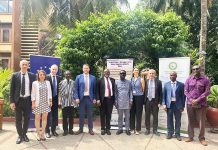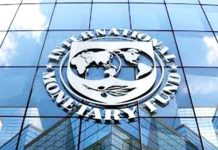Mr. Peter Antobre Ofori, an Assistant Commissioner in charge of Transit, Customs Division of the Ghana Revenue Authority (GRA), has indicated that Ghana is yet to realise full trade potential across the sub-region.
Mr. Ofori, speaking at the Ghana Ports and Harbours Authority’s (GPHA) media forum, said the country had, however, made significant advancements through the use of the Integrated Customs Management System (ICUMS).
He explained that to realise the full potential for trade across the sub-region, customs administrations were required to link their individual clearance systems, adding that this was made possible by the new Interconnected System for the Management of Goods in Transit (SIGMAT).
 He said currently, Ghana was fully interconnected with Cote d’Ivoire and Togo, while progress was being made to interconnect with Benin and Nigeria.
He said currently, Ghana was fully interconnected with Cote d’Ivoire and Togo, while progress was being made to interconnect with Benin and Nigeria.
He added that the connection with Burkina Faso and Niger on the SIGMAT system had stalled due to the political situation in those countries.
According to the Assistant Commissioner, Customs was working to resolve the teething challenges that had emerged from the use of the SIGMAT, indicating that a committee had been put in place to address the issues.
He said the implementation of the SIGMAT under one year had come with some gains, which included the protection of the protocols governing the ECOWAS Trade Liberalisation Scheme, a reduction in smuggling, and other trade and criminal offences.
Mr. Eddy Akrong, the outgoing president of the Ghana Institute of Freight Forwarders (GIFF), said, on his part, that even though the SIGMAT was a good system for transit, it was fraught with some technical difficulties that were inconveniencing other cargo segments, such as direct exports.
Mr. Akrong said, “Just this week, a gentleman coming from Togo with a box of hair pieces got into Ghana, but was told by customs they needed to wait for a signal from the Togolese side because of SIGMAT. This is surprising because it is something that needs to be treated as a head load.”
He added that such actions frustrated trade facilitation, as he noted that the importer had to wait for the signal and go through a whole declaration.
He further said that on the direct export side, if importers made a declaration because it had been consummated into the SIGMAT, they must do what bonded transport, although they did not have to do a bond for it as it was not a requirement.
Once they do that, there is a gate-in, gate-out process to confirm the status of goods.
He added, “First of all, you’re entering information that is non-existent because you haven’t done a bond yet. You’re supposed to enter some bond information, which means you may have to make it up.
“Once the gate out is successful, you have to see the customs officer at the other end to gate in and out before the declaration is freed; otherwise, it will look like your declaration is in suspense.”
Mr. Akrong stated that it was important for urgent attention to be given to the technical challenges of the SIGMAT system in order to cover only transit as originally intended. He further called for the intensification of sensitization on the SIGMAT system, as it currently appeared not enough importers and freight forwarders were known.
By Laudia Sawer
GNA









